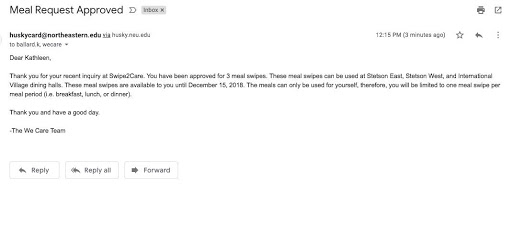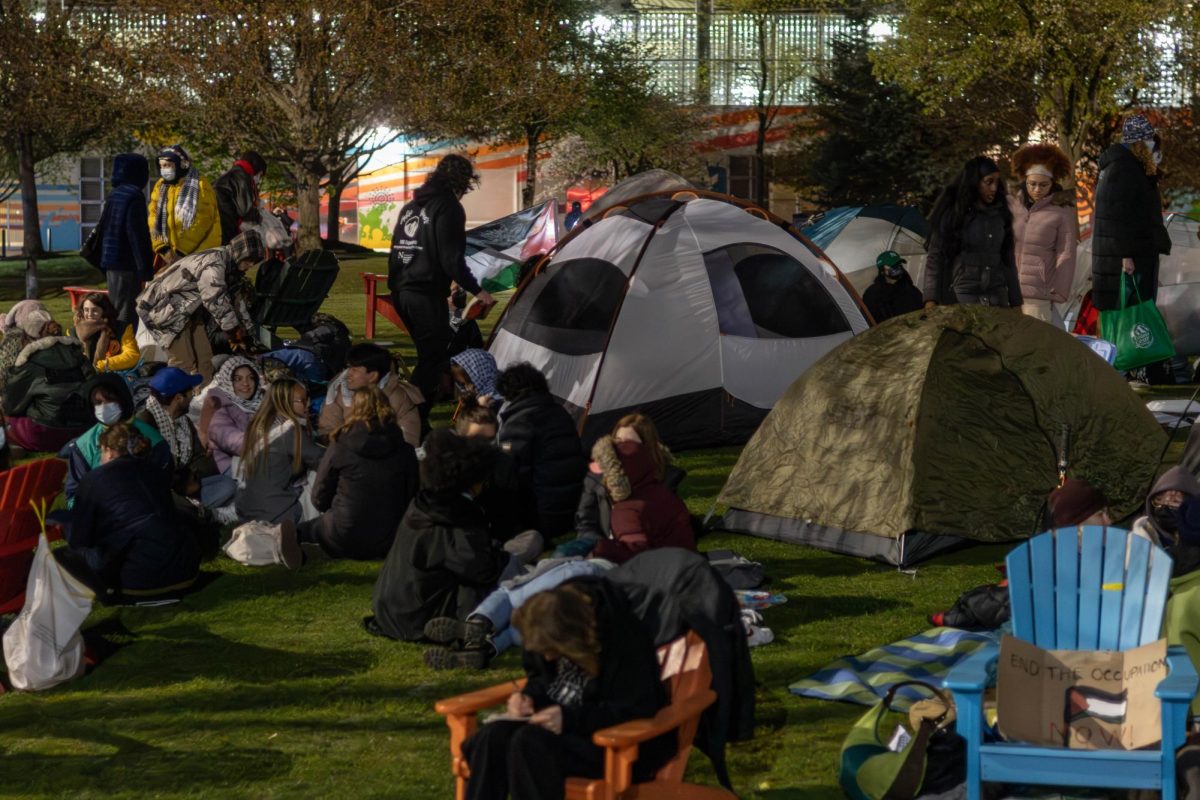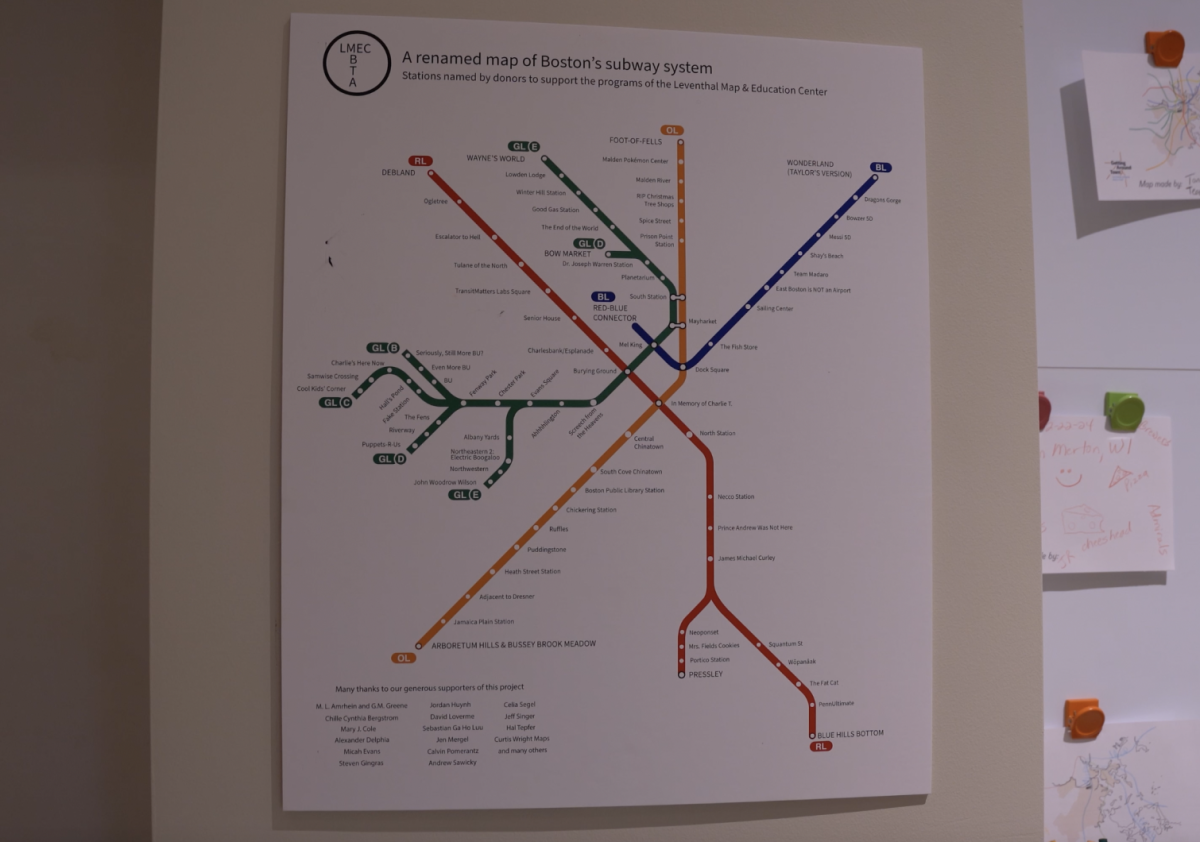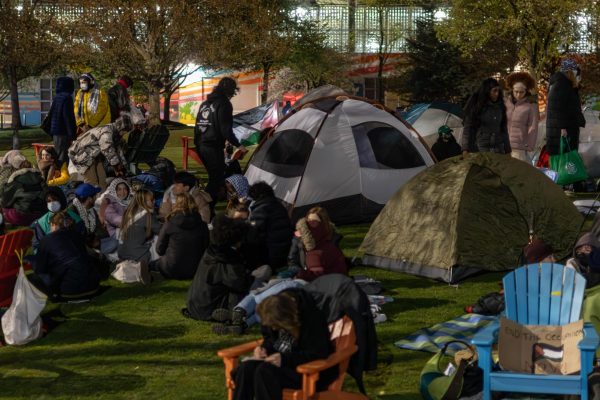Students fighting food insecurity look to the university for help

Photo courtesy Kathleen Ballard
Students can request meal swipes through the Swipe2Care program on their MyNortheastern portal.
January 30, 2019
Kathleen Ballard sat in Curry Student Center around 7 p.m. on a Tuesday with a sorority sister, enjoying a meal before their weekly chapter meeting.
To their right, students indulged in warm meals purchased from the surrounding campus restaurants. On the other side, her friend caught a glimpse of a nicely-dressed young woman, who would easily blend in amongst the waves of students. She reached into a garbage can to find a container of half-eaten food for her own dinner, then stood in line at one of the restaurants for a split second before joining the sea of students.
Ballard, a third-year pharmacy major at Northeastern, witnessed her peer finish what was another student’s waste. No stranger to the food insecurity that plagues Northeastern’s campus, Ballard is well aware of the struggles facing college students, and the new programs that could help them at Northeastern.
“I was on a meal plan when I lived on campus freshman and sophomore year,” she said. “I’m on heavy financial aid, so I fill out FAFSA every year and get a lot of aid from Northeastern.”
A clear need on campus
Although Ballard has few worries in regard to tuition, the price of food on campus, whether through a meal plan or purchasing individual meals, steers Ballard and many other students away from those options and toward off-campus food sources.
“Most [meals] are like $17 or $18 per swipe, and I don’t normally spend that much money on food, whether it’s $10 on a meal at a restaurant off campus or food from a grocery store for the week,” Ballard said.
She has been fully responsible for her own food and rent since moving off campus in September, a decision that was made after realizing it was much less expensive to live in an apartment than in on-campus housing. She explained that pharmacy co-op positions, like the one she currently holds, generally pay just above minimum wage, which requires her to stretch and budget for necessities.
Swipe2Care, an initiative that was rolled out at the beginning of the fall semester as a collaboration between the Student Government Association, or SGA, and the Office of Student Affairs and Dining Services, assists students like Ballard in making ends meet. The initiative was driven by former SGA president Nathan Hostert, who resigned that position in late November.
“I’ve had some friends who aren’t on meal plans because of the cost,” Hostert said in December. “Every year, SGA does a student priority survey and one thing that kept coming up last year was the price of meal plans. This kind of gave us evidence that we needed to get the program started.”
Swipe2Care gives students with meal plans an opportunity to donate excess dining swipes to other students. When students go into the MyNortheastern portal to request the donated swipes, they have to explain their circumstance and get approved by the We Care Team, which can take up to five business days.
“I used the Swipe2Care interface to get meal swipes pretty consistently — every week. If you use the interface to request swipes, you can get up to three weekly,” Ballard said.

Requests for extra meal swipes can take up to five days to be processed by the We Care Team.
Though she has never had to wait more than 36 hours and the swipes are available immediately after she receives her approval, the lengthy process can be daunting for a hungry student.
“It says more about the students who are logging in to donate,” she said. “I remember to log in because I need the swipes to eat, but I think it’s really cool that it’s a priority for those students to log in and donate every week.”
Room for improvement
One of the biggest complaints about Swipe2Care from students was the marketing, as the university only sent one mass email in August announcing the program. The university did not respond to a request for comment for this article.
“We’ve had a significant number of students who have used the program,” Hostert said. “Going forward though, I definitely think that a larger scale campaign marketing this to more students is definitely necessary. Every week at the end of the week if students have leftover swipes, they should automatically be entered into the pool, and that would make the system more efficient.”
He said that since this was only the first semester for Swipe2Care, there is a lot of room for improvement. In trying to improve awareness of the program, SGA sent an email to the student body reminding them of Swipe2Care on Jan. 17 and Jan. 28 in response to increasing demand for meal swipes.
The initiative is not open to all students, which poses another issue. Jordan Clark, a 30-year-old graduate student in the urban informatics program who often wonders about the source of his next meal, was excited to learn about the Swipe2Care program, but was disheartened to find out the benefits did not apply to him.
“Northeastern has the resources, infrastructure and willingness to fix the problem, but there’s a bias in the algorithm,” Clark said. “Northeastern correctly identified the problem, but need help in finding the solution.”
The solution, Clark said, requires giving the decision-makers the ability to feel what it is like to be in a situation where you don’t know if you can eat at night.
That is why Clark founded Human-iT-E, a company that uses biometric virtual reality and artificial intelligence to capture people’s feelings. This would be able to quantify a person’s capacity for empathy in any situation. Clark said in order to solve the problem, you have to be able to truly empathize with the people in a given situation — In the case of food insecurity, to understand the toll that it can have on a person’s well-being.
“Northeastern is in a position to set precedent for how an ecosystem uses empathy to solve food insecurity,” Clark said. “As the program evolves, a step would be normalizing Swipe2Care so students who struggle with hyper-independence don’t feel bad for letting other students help them.
“Creating broader awareness about this opportunity to increase people’s capacity for empathy, on both sides of the issue, has the potential to create an inclusive environment for marginalized students to speak and be heard.”

















